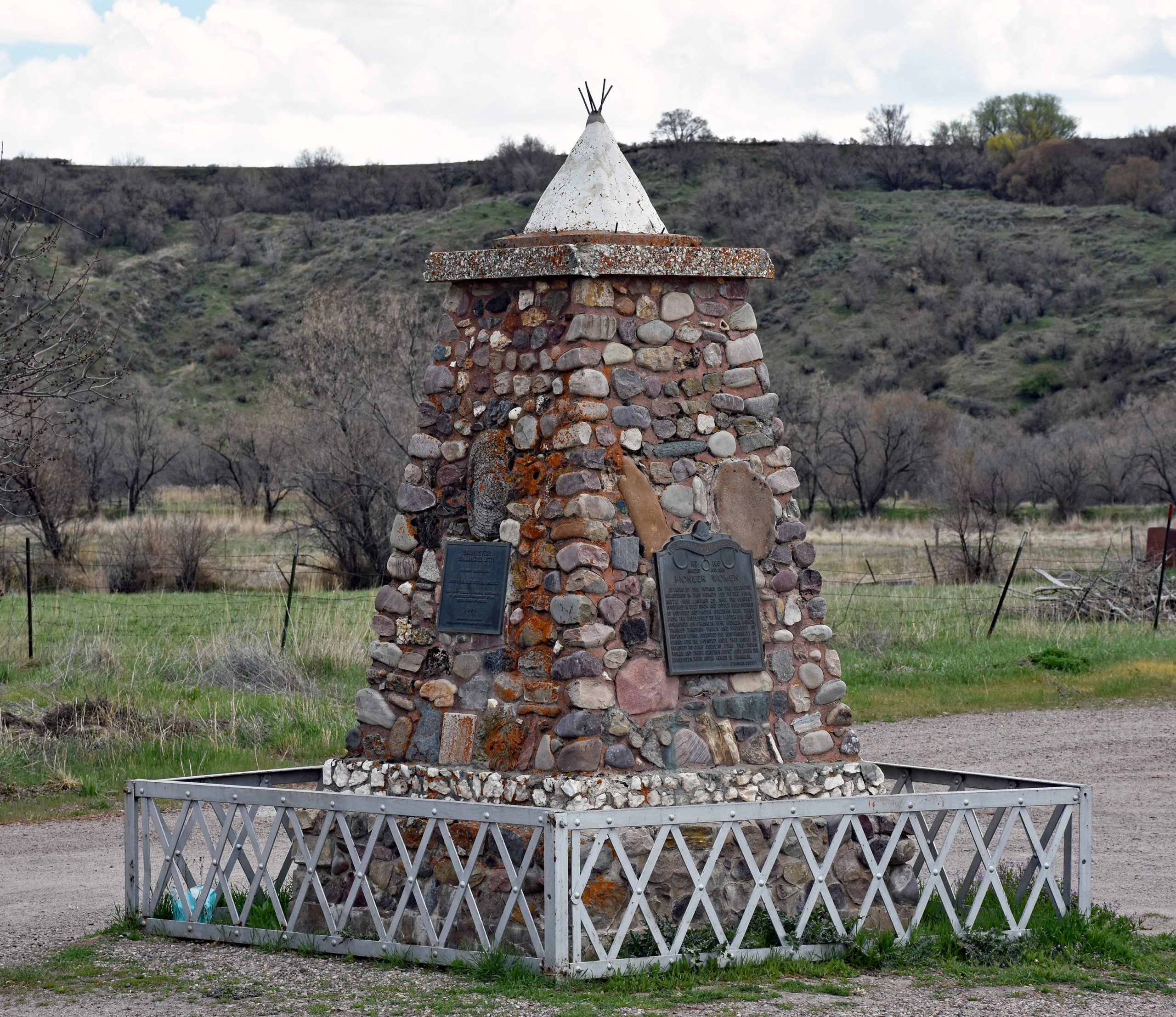Nov 12 2024 4 mins 5

(Photo courtesy Michael Sherman / Spring Fed Media)
Regrowth and renewal were the themes of a special replanting ceremony in Blue River this weekend.
As KLCC’s Brian Bull reports, the event was also to highlight the history of Native Americans in the McKenzie River Corridor.
About 30 people gathered to accept white oak seedlings that were blessed and sprinkled with tobacco.
Dietrich Peters of the Confederated Tribes of the Grand Ronde coordinated the event.
“Come on up, we’ll get you some tobacco, and you can offer your prayers as well.”
Katherine Wilson of the group McKenzie Reel said while much of this was to help restore Blue River’s landscape after the devastating Holiday Farm Fire of 2020, it was also to highlight the activity of Native people who crossed through before colonization.
She said there was one clear takeaway from the event by those present.
“Well, by the sounds of the sobs, the healing. The river and the land just seemed to be so joyous. It was healing, and I didn’t expect that.”
Attendees took oak tree seedlings to plant across the region. Wilson says she’ll hold similar events soon, to complement Blue River’s natural rejuvenation as it keeps building homes and facilities.

A view of the 1932 monument near the site of the 1863 Bear River Massacre. (Public domain)
Hundreds of volunteers from Utah and Idaho gathered recently to help the Northwestern Band of the Shoshone Nation restore the site of the Bear River Massacre.
For the Mountain West News Bureau, Clarissa Casper of the Salt Lake Tribune and Utah Public Radio has more.
Rios Pacheco stood on the land where, in 1863, his ancestors were victims of one of the deadliest massacres of Native Americans in United States’ history.
Behind him, across the site of the Bear River Massacre, hundreds of volunteers planted native shrubs and trees –– a collective effort to heal what was taken from both the land and the Northwestern Band of the Shoshone Nation.
For Pacheco, who serves as the tribe’s spiritual leader, planting native plants on the land where hundreds of his ancestors’ lives were stolen is a way to not only restore the ecological balance of the area but also to heal the spirits of his people.
Once you plant something in the ground, he said, life is restored.
Through the plants, he feels connected to his ancestors.
Planting native species on this sacred ground is a way for his people to return and heal –– much like a plant regenerates from its own seeds.
In reconnecting with the land and honoring the memories of those who survived, the plants offer both renewal and forgiveness for the past, he said.
“That’s just like the plants. When you plant them, the forgiveness comes by taking care of them, fertilizing them, watering them, so that way that plant will grow again.”
The Northwestern Band of the Shoshone Nation began its journey to ecologically and spiritually restore the site of the Bear River Massacre in 2018 when it purchased approximately 350 acres of their ancestral land just north of Preston, Idaho.
This is the second year the tribe has held a planting weekend at the site for volunteers, and the second time hundreds of individuals from both Utah and Idaho have dedicated their time to the effort.
The Bear River Massacre occurred during one of the coldest winters his ancestors experienced at the site, Pacheco said.
His people would camp in the valley where the attack occurred during winters because of the warmth the area provided with surrounding hot springs.
The tribe’s efforts to heal the site –– named “Wuda Ogwa,” which directly translates to “Bear River” –– are also meant to honor the plants that used to be abundant in the area and aided Pacheco’s ancestors in a variety of ways.
Because Wuda Ogwa is primarily a wetland habitat, many of the native plants that volunteers planted on Friday and Saturday were water-based and will help filter the river,
Pacheco said the tribe has also made efforts to build beaver analogs to hopefully bring beavers back to the area to perform their beneficial river duties.
As volunteers worked, Pacheco observed them and heard them share stories about the plants they planted last year and the friendships they have developed through the effort.
“You’re not just elevating the landscape. You’re elevating your inner spirits.”
Although the tribe has only involved the broader public in its project since 2023, a great deal of work has been done to prepare the land for the new plants.
For the past three years, the Utah Conservation Corps has been removing thousands of invasive Russian olive trees that have invaded Wuda Ogwa’s floodplain since the massacre.
This tree, according to UCC Northern Regional Coordinator Ben Borgmann-Winter, outcompetes the native vegetation the tribe hopes to revive in the area.
Russian olives also serve as “junk food” for wildlife, Borgmann-Winter said, as their olives are high in sugar and not nutritionally valuable.
In addition, these trees channelize and hold riverbanks in place, leading to various issues, including lowering the water table and decreasing moisture levels in the soil.
They also siphon an estimated 75 gallons each day from the Bear River that could ultimately make its way to the Great Salt Lake, Borgmann-Winter said.
“This is a really special space, a sacred space. Look at how many hundreds of volunteers are here right now from all over Utah, all over Idaho. It’s a pretty special project. We’re very honored to be involved in that.”
The tribe’s big-picture vision for the land includes planting 300,000 native shrubs and trees, cleaning up the land’s creeks, and restoring degraded agricultural fields into wetlands abundant with life.
Get National Native News delivered to your inbox daily and stay up-to-date on the 2024 Native Vote. Sign up for our daily newsletter today.